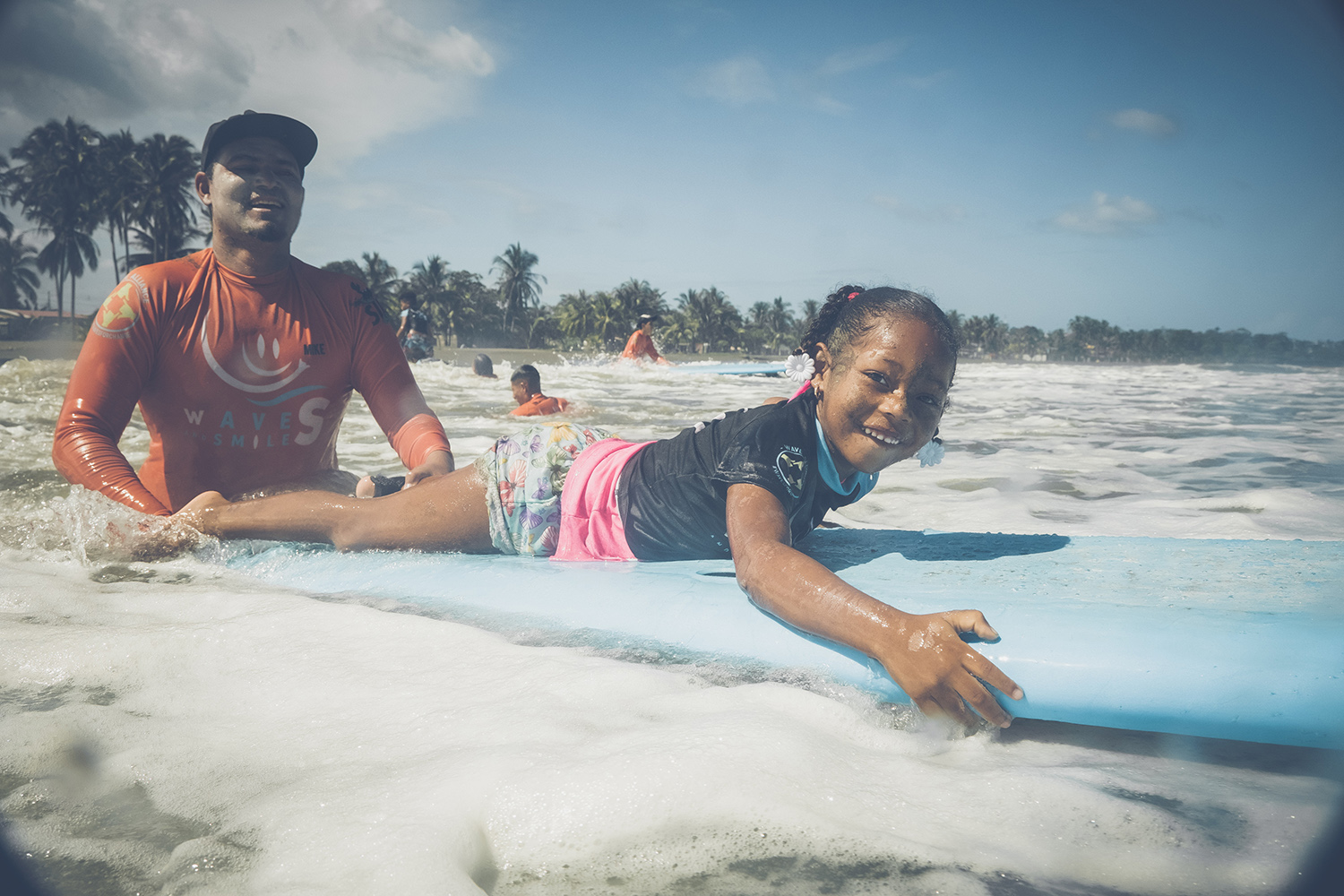It all started with a school desk. But not in a classroom.
Michael Castro Arias was 11 years old, walking along the beach one day in his hometown of Cieneguita, Limón, when he saw a boy riding waves perched on the top of a school desk he’d taken from the local school.
Michael was intrigued.
“I asked him if he’d loan it to me to see, and that started it all,” he says, now a dad of two and an accomplished surfer. “Later, someone gave me a bodyboard and I managed to stand up on that. Then someone gave me a surfboard—it was so ugly, but it was beautiful to me… Having the secret of happiness and wanting to share it. That’s what surfing is.”
Costa Rica is a rising force in the surfing world, as demonstrated in Tokyo earlier this year, where Brisa Hennessey, Leilani McGongagle, and Leon Glatzer were three of only 40 surfers worldwide to participate in the sport’s first-ever Olympic Games. This higher profile for surf worldwide, and for Costa Rican surf in particular, has led some of the sport’s most passionate advocates in Costa Rica to figure out how to make surfing more accessible for people who have traditionally been excluded.
In Costa Rica and Central America, those groups include women; athletes with disabilities; and youth from coastal communities who have the sea within arm’s reach, but can’t afford the hundreds of dollars necessary for even a basic board.
“We focus a lot of our work on coastal areas, because we know that Costa Rica is a global force in surf, and that people on the beach don’t have access to surf for various reasons: because of a real perception and reputation [of exclusivity] that surf has in beach communities, and the economic factor,” says surf instructor, judge, and inclusivity advocate Gustavo Corrales. “For me, it’s easier to take my two daughters to play soccer for free with the Municipal Sports Committee than it is to train them in surf and have to buy boards, wait for the right waves, and so forth.”
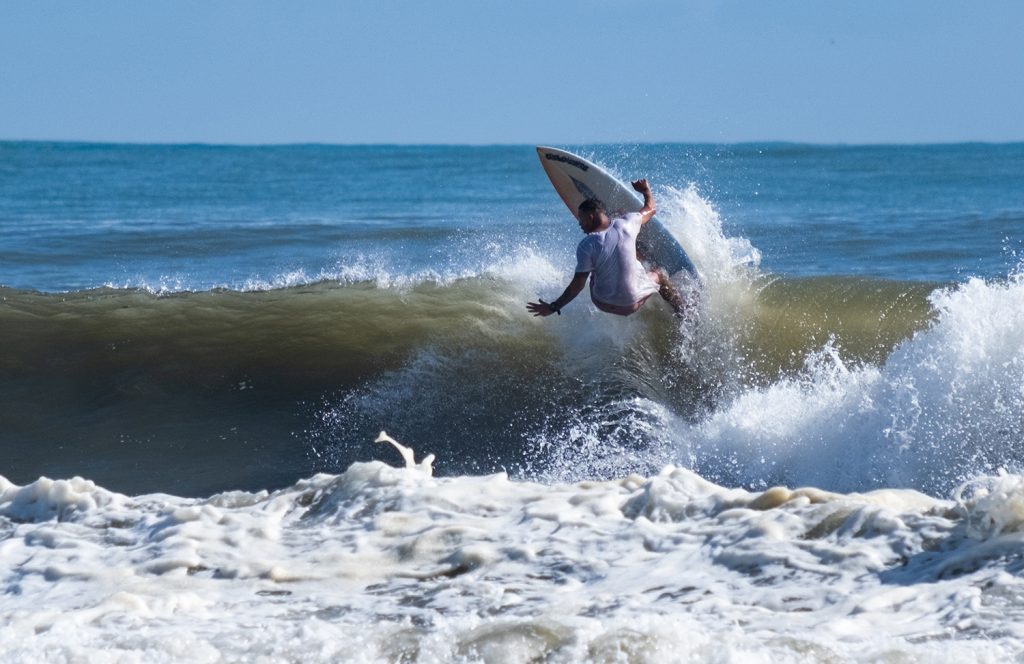
“Surf isn’t only masculine, but it’s a super white sport,” says Catalina Chacón, a Costa Rican who helped create the Sirenitas de Popoyo project in Nicaragua. “It’s hard to find Nicaraguan women who are professionals surfing… most of our volunteers are foreigners. There’s no reflection of [non-white women surfing]. The girls are literally creating that reflection for themselves, for the girls who come after them.”
What happens when that reflection gets made: on a beach in Nicaragua, or in Cieneguita de Limón, or every time a surfer with a disability finds new freedom in the water?
Those are questions Catalina, Mike, and Gustavo have been answering for years now.
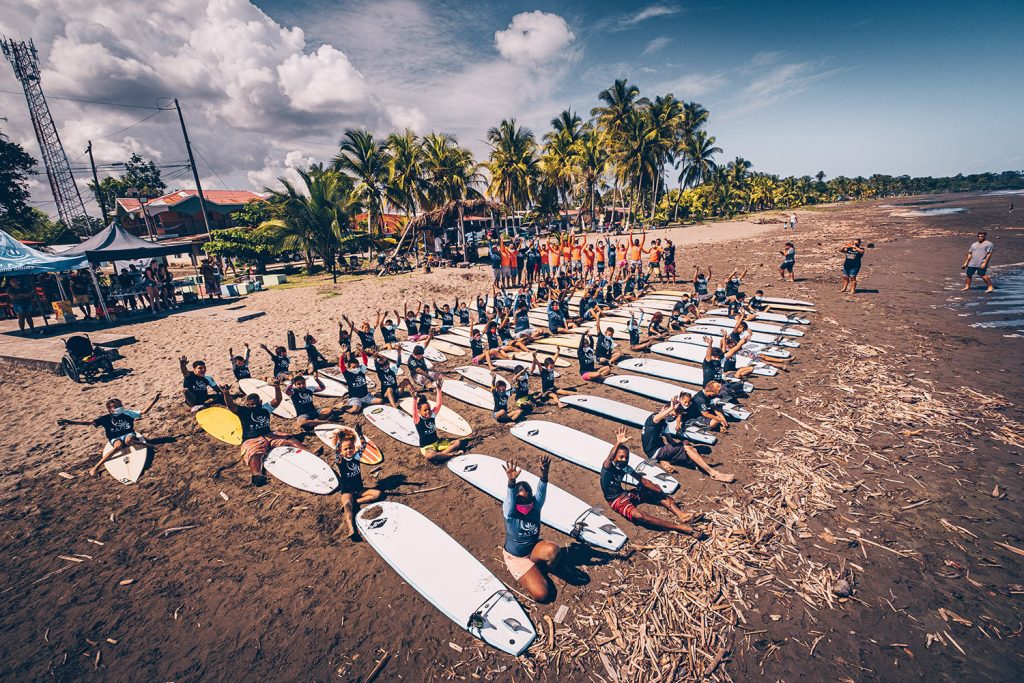
What happens when a girl learns to surf—and swim?
Catalina, or Cata, first went to Nicaragua in 2016. She had just finished her degree in psychology and went to set up mental health services in the southwestern coastal region of Popoyo for the Foundation for International Medical Relief of Children. However, she quickly realized she’d need to take a broader approach to mental health.
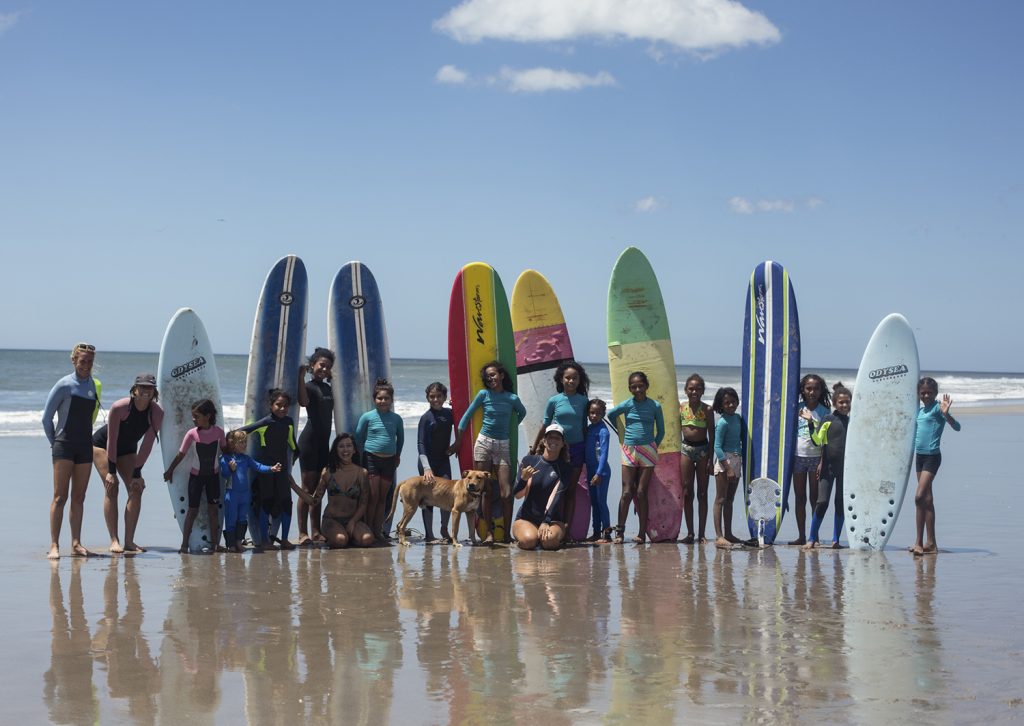
“The idea of having appointments or doing psychotherapy wasn’t a reality, because the concept of mental health hadn’t been explored in the community,” she says. “We had to start from scratch.” She developed initiatives to help local women generate income through artisan goods, and, in partnership with Belgian surfer Isabelle “Bella” Delfosse, Sirenitas de Popoyo (Little Mermaids of Popoyo).
Both women had noticed that, despite Popoyo’s status as an international draw for surfers—Bella owns a B&B in the area and works as a surf instructor—it was rare to see local women and girls on the beach for any reason, Cata explains. If you do, it’s probably a woman meeting her husband, a fisherman; she’s unlikely to be in a swimsuit, and definitely not enjoying the water. In addition to cultural taboos, a family that lives 10 or 15 minutes from the beach might not have the time for a trip, or the resources for the bus ride.
So one day in March 2016, Bella and Cata hopped into Bella’s car and went door to door, asking every family with daughters if the girls would like to come learn. The parents of ten girls said yes right away, and Sirenitas was born.
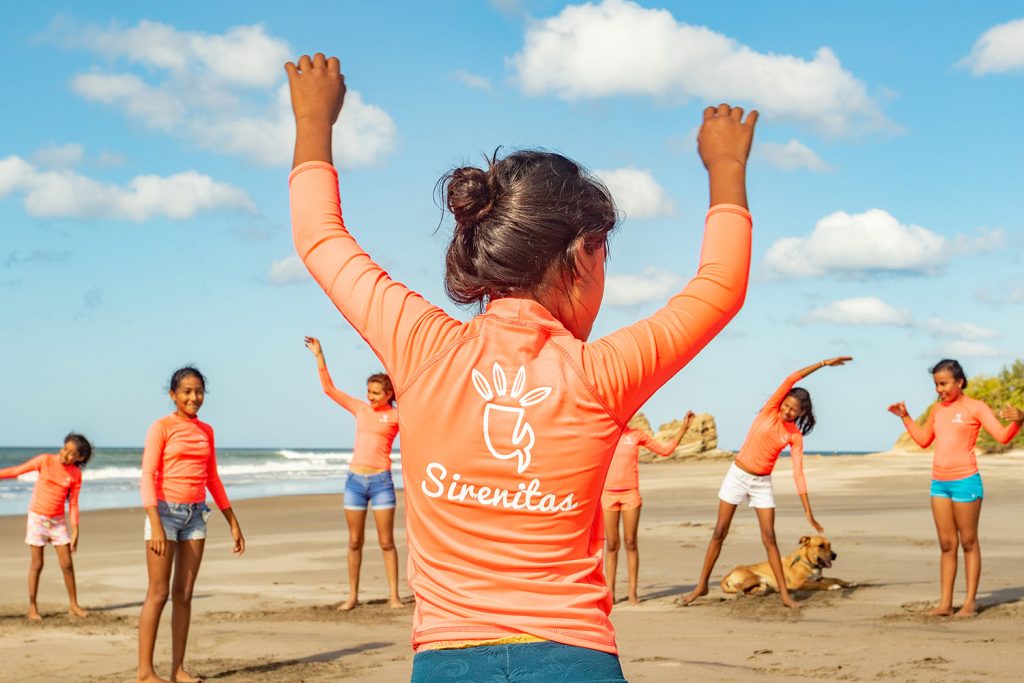
Johanna Guzmán Mora was one of those mothers. Her daughter, Megan, was eight years old at the time. Like many of the girls in Sirenitas, Megan has an older brother who surfs—but the sport wouldn’t have been in the cards for her, as a girl, without Sirenitas.
“My son surfed, but not my daughter,” recalls Johanna, who works as a private preschool tutor. “My daughter seemed so small for this. I said, ‘I don’t think she’ll be able to do it, but if she likes it, I’ll support her.’”
The project started out with twice-monthly surf lessons, but almost immediately, the co-founders realized that wouldn’t be enough. For one thing, only one of the girls knew how to swim, so swim lessons were a must. They then added lessons in English, computing, and taekwondo to the mix, all through donations to a Belgian foundation they set up to support the initiative. The organization, now preparing a more structured calendar for a new generation of girls—with the original participants as mentors—recently launched a fundraiser so they can make their out-of-pocket efforts more sustainable.
In addition to bringing in new generations of Mermaids, the program is starting to prepare its older members for competition, and hopes to find ways to connect them with university scholarships.

Given that Nicaragua lacks the extensive structures to support and finance sports that exist in Costa Rica, individual donations are the only option for the organization, Cata explains. She is based in the northwestern Costa Rican province of Guanacaste but travels to Nicaragua frequently.
Johanna says the impact of the program not only on her daughter—who has become “looser, more expressive when she talks, fearless”—but also on her community, has been noticeable.
“Men are a little sexist, machista. They have that vision, and it’s changing now a little bit,” she says. “Here we’re taught that men can go out, that women need to stay home and take care of their little siblings. They don’t have an opportunity to have fun or tackle a wave on their own. That’s changing… girls are seeing themselves differently in the community, seeing that they can do it and that they deserve their space, too.”
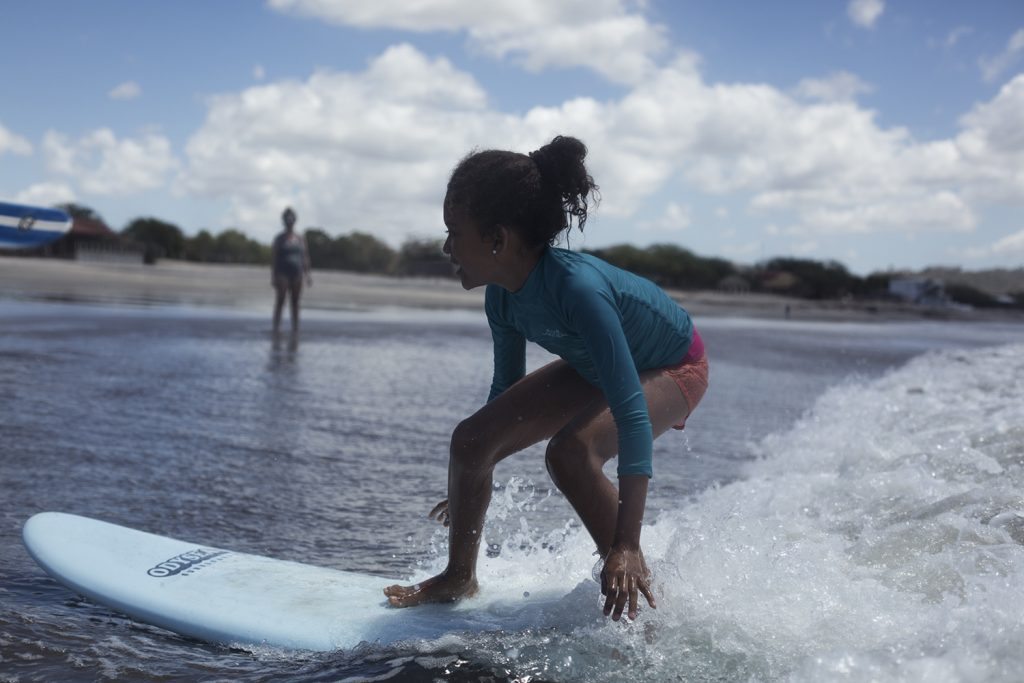
She says that although she, like her daughter, grew up within a 20-minute walk of the beach, she wasn’t allowed to spend much time there growing up, and certainly not alone. Now, she goes frequently to watch her daughter surf.
“Actually, today I went to watch the girls surfing and I saw that some boys went up to them and offered them some wax for their boards,” she says. “I was so excited to see that they no longer see the girls as, ‘You can’t do it because you’re a woman.’”
What happens when a struggling teenager becomes a teacher?
Across a border and across the isthmus, on Costa Rica’s Caribbean coast, Mike Castro is pursuing the same type of youth empowerment that Sirentas seeks. His adventure on a floating school desk would one day lead Mike to create the nonprofit Waves and Smiles, and led his son Axel into his own successful run as an internationally competitive surfer.
Mike says his own experience with surfing taught him that it can make the difference between a functional life, and jail—or death.
“Out there in the water, I was able to quiet lots of voices and find a little peace in the middle of everything I was living through,” he says of his teenage years. “My family fell apart because of drugs. My mom used drugs, and started using crack, and as a teenager, that causes lots of uncertainty, emotions, and questions… you’re afraid, and you don’t want to live anymore. That’s what happened to me.”
He says that while it was hard for a kid like him to break into the surfing world at the time, the focus the sport provided saved him from the fate of many of the kids from his generation in Cieneguita; he’s lost too many friends to violence or jail. He married at 18 and now has two kids with wife Esmeralda: Axel, and Mikela, 8. (Naturally, Mikela is an accomplished surfer, too.) He also finished school and is now a nursing technician for the EBAIS, Cieneguita’s public health clinic.
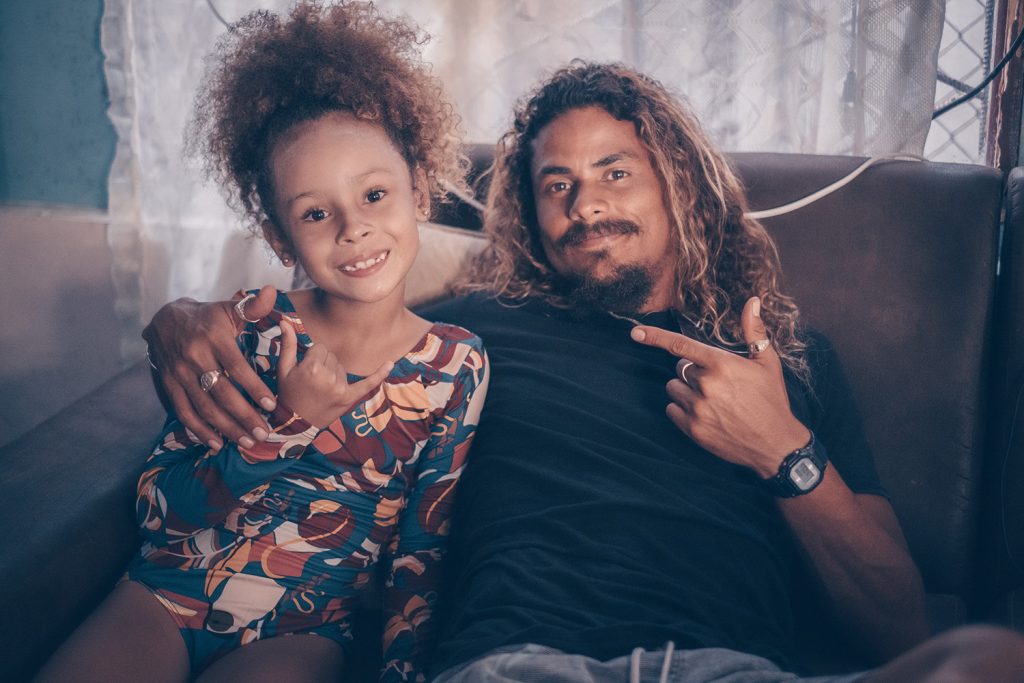
In 2018, as the founder of the Cieneguita Surf School, Mike was invited by the international nonprofit Waves for Change to attend a 20-day training in Capetown, South Africa. There, he saw the impact that surfing programs had had on the lives of young people in the country’s favelas.
“It broke me up, because I said: This would have saved my generation,” he remembers. “Many of my friends are dead or in jail. I have to go vaccinate people in jail, and I’ll hear voices calling my name: I go to see, and it’s my friends.”
He came home as a man on a mission, and has now served 159 kids through Waves & Smiles. Like Sirenitas de Popoyo, Mike’s nonprofit trains young surfers as a way to improve mental health. Aided by his work at the EBAIS, Mike says a lot of his work involves connecting kids with health information and resources, and that he works with a wide range of public institutions to try to address local kids’ needs. Through everything from formal partnerships to receiving groups of kids in his family home for movie nights, he says the program—powered entirely through in-kind donations of equipment—aims to surround kids with a wholesome environment.
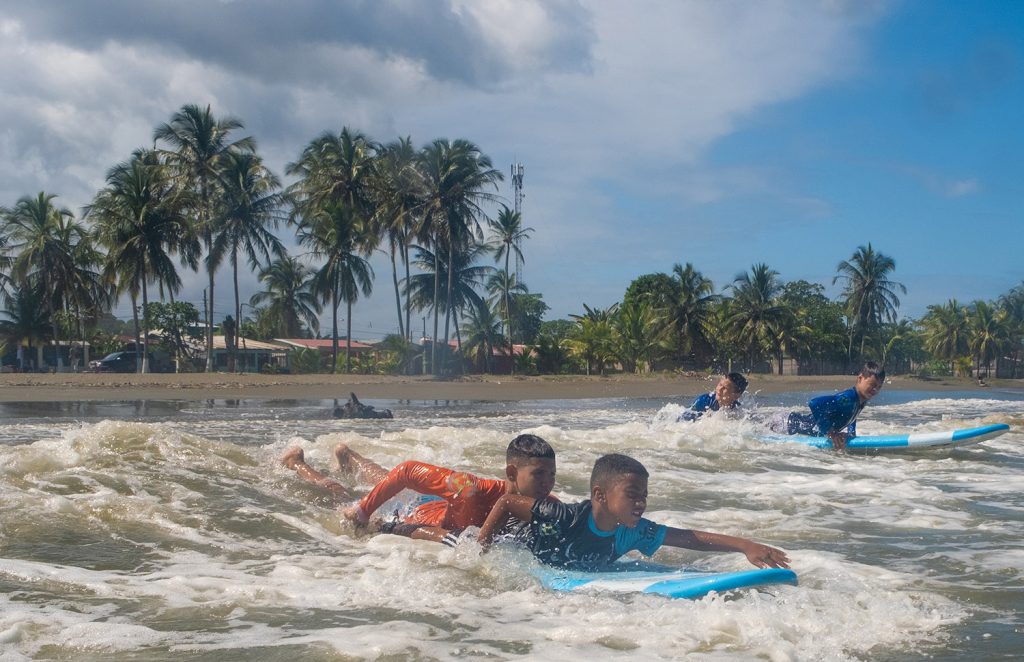
“In my childhood we talked about what we were going to do, what we were going to rob, who we were going to beat up,” he says. “Now they say, ‘What are you going to study? Profe, why don’t we go to that tournament? Why don’t we organize a barbeque?”
He says he gets calls frequently from other communities that want him to replicate Waves & Smiles. While that’s his dream, he says he first needs to consolidate the Cieneguita program, which includes continuing to work with the older kids who are now mentors and lifeguards.
“Imagine that you’re 14 or 15 and a little kid is pulling on your shirt. You turn around to see him and he calls you Teacher, Profe, Instructor. They feel that they’re worth something, that they are important,” he says. “They think, ‘I’m really a teacher? I feel so good.’”
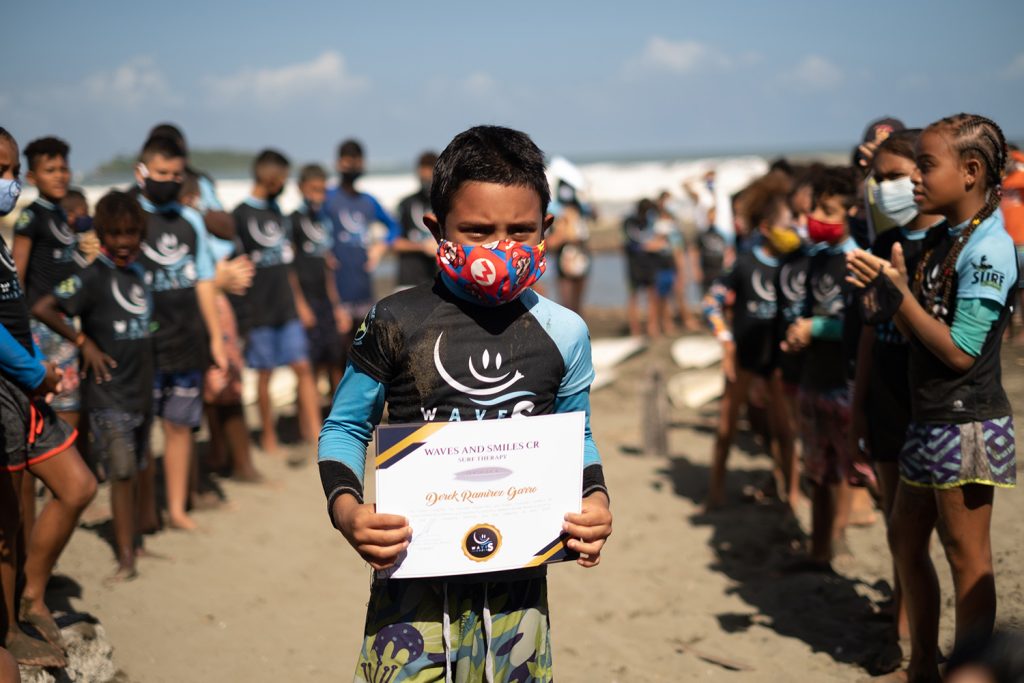
What happens when a surfer rises from a wheelchair?
Gustavo Corrales has long been an advocate for greater inclusion in the sport he loves, but that path took an unexpected turn in 2014, when friend and fellow surfer Ismael Araya had an accident that left him in a wheelchair. When Ismael managed to get back in the water, “he said to me, ‘I felt like myself again. I didn’t need a wheelchair. I didn’t need to be carried,’” Gustavo recalls.
Since Gustavo was already a leader and judge within the Costa Rican Surf Federation, he knew there was a budget line available to support Ismael in attending the first-ever para surf World Cup in California in 2015. Just like Mike Castro’s trip to South Africa, Ismael’s turn at the tournament, with Gustavo along for support, sent the Costa Rican surfers home with a new motivation to create an organization in Costa Rica.
“We started a movement called Adapted Surf Costa Rica, an association that works in three areas,” Gustavo explains: high performance surf for competitors like Ismael, recreational surf for people with disabilities, and surf therapy, which addresses the needs of surfers and families in an integrated way.
Surf therapy ranges from “all the good things the person receives through the benefits of salt water, the activation of the senses and balance… to breaking that mental framework that says, ‘I’m not good for anything. I can’t do anything’,” he says. “We see family members crying and happy because their child or their spouse is taking on the sea.”
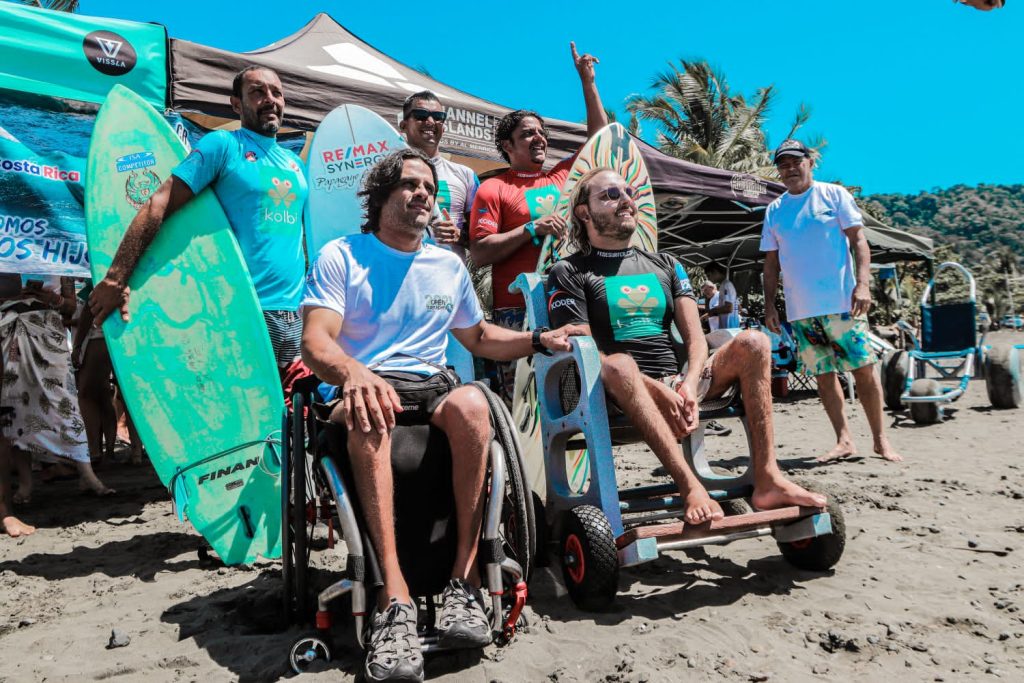
The jaw-dropping stories Mike has to share about the achievements of para surf athletes in Costa Rica could fill an entire month’s worth of stories—including that of world champion Henry Martínez, a blind surfer who once challenged some of his fellow Costa Rican surf champions to wear special goggles so that they, too, could experience surfing without being able to see. (Gustavo says that when he first heard from a friend about the raw balancing skills of Henry, a non-surfer at the time, and called him up to propose a surf session, Henry said: “Is this a joke? To start with, I’m not even an athlete”).
However, our conversation also delves into the financial nuts and bolts of developing Costa Rica’s para surf movement. Like Cata and Mike, Gustavo’s efforts often come down to colones and budget gaps.
First, the positive, and there’s a lot of it to celebrate: according to Gustavo, Costa Rica is very much on the vanguard of para surfing and surfing inclusion on a global level. He says he’s yet to meet someone from another country where para surfing is not confined to its own events, but is rather integrated into the National Surf Circuit as it is in Costa Rica—just another category in mainstream events.
What’s more, a set of new legislation and regulations in 2019 increased the representation of para athletics within Costa Rica’s national sporting bodies; a key article required the National Institute of Sports and Recreation (ICODER) to set aside 20% of its sports federations budget, for organizations that support athletes with disabilities. (Read more about Costa Rica’s overall para sport movement in our piece from earlier this month).
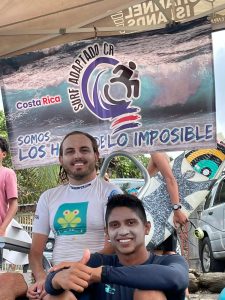
Because the Association for Adapted Surf was one of the most well developed organizations in that category when the new law was passed, it obtained a whopping portion of that new budget line for 2021, 20 million colones (just over $31,000), of which 11 million were set aside for the para surf National Team. However, that wasn’t anywhere near enough to cover the team’s costs: taking its nine athletes to the world cup in early December 2021 costs about 30 million colones (approximately $47,000), he explains.
Because each athlete requires at least two helpers to travel and the team needs a fully accessible living space, costs run high. To make up the difference, Gustavo and the Association do everything from soliciting individual donations to working with the Costa Rican community in California, which has come together to provide food for the athletes.
Next year, as the National Team grows to 12 athletes, the challenge will more than double: because other para athletics organizations have caught up over the past year, there was more competition for that 20% of the national budget in 2022. This is good news for para athletes as a whole, but tough for the surf association, which will see its ICODER support drop from 20 to 9 million colones.
“I’ve created partnerships and the athletes themselves have learned to knock on doors,” he says. “We’ve never managed to get a serious sponsorship. People will provide food when we’re going somewhere, or donate shirts. We do fundraising events and pass a piggy bank around. We sell shirts. We teach surf lessons.”
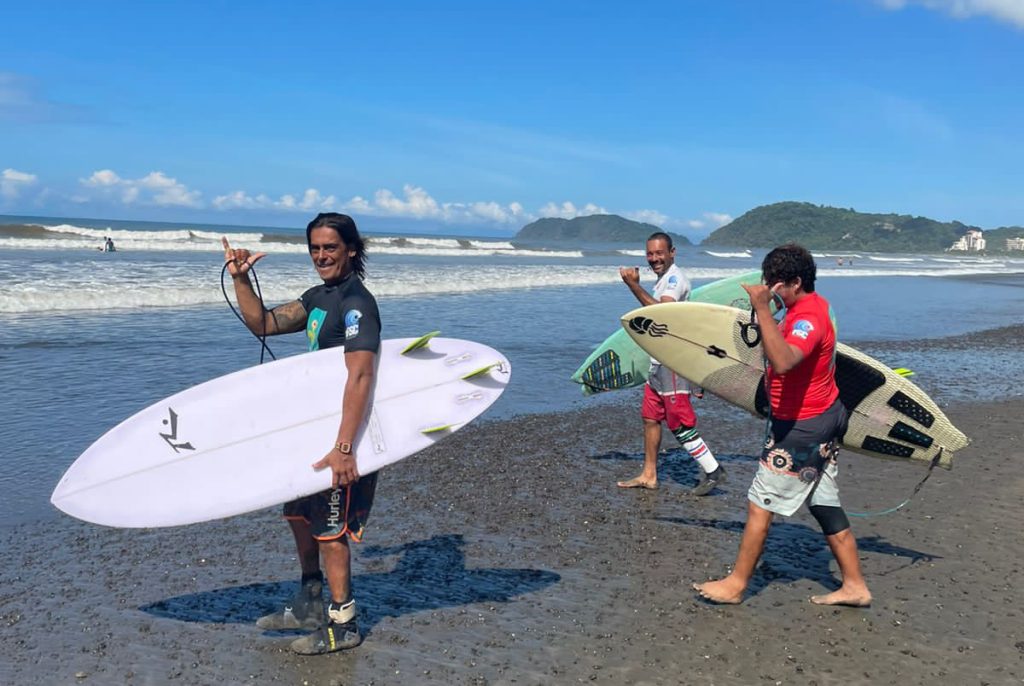
Like Cata and Mike, he keeps finding creative ways to subsidize pro bono work on surf inclusivity. And like Leilani, Brisa, Leon, and other Costa Rican stars, his eyes, and his athletes’ are on the Olympic rings.
For para surf to classify as a Paralympic sport, 32 countries must qualify, meaning that they have a National Team, tournaments and classifiers. For para surf as has been the case for mainstream surf, a higher global profile would make it easier for organizations such as the Costa Rican Adapted Surf Association to “pound on the table” back home for more resources, Gustavo explains.
“Costa Rica has a good reputation because of our progress,” he says. “We’ve already brought home five medals for our country; our National Team started with one, and now we’re 20-something… we really want to see whether we can be taken into account, if not for 2024, then for 2028.”


